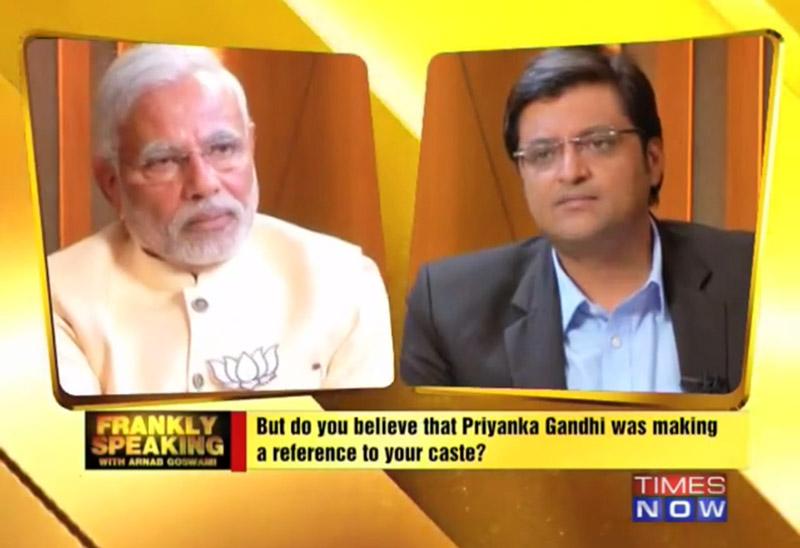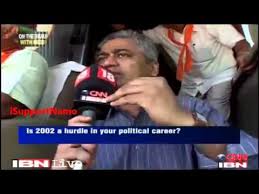Two major things happened on the 25th of June. One, India marked 40 years of the emergency imposed by the Indira Gandhi government. And two, India launched the Smart City project. It was like a midpoint between a dark, frightful past and a bright, hopeful future. But those of us who depend completely on English news channels to inform ourselves, were deprived of knowing about either. Thankfully, not too many of us do.
All the bigshots of the current establishment spoke about the emergency on its 40th anniversary on different forums. The smart city project has been one of the core elements of the current establishment. That these news channels spent the day not covering these but attacking the current government on issues of relatively lesser importance was no surprise. It’s an open secret that the mainstream media is largely leftist and has been anti Narendra Modi since his initial years as the chief minister of Gujarat. This anti-Modiism has been on the rise ever since the government’s honeymoon period ended. (When the honeymoon period ends is subjective, but we can say for sure it’s been long over.) Last week, when the BJP thrashed its rivals (Congress, JDU, RJD) in the legislative council election in Bihar, the media chose to remain mum about it. News about the prime minister’s trip of central Asia too came to the forefront only when he met his Pakistani counterpart and then faded back into oblivion. Mainstream media
Read: Newspapers in India and their Political ideologies
There is a school which strongly believes that the establishment should take the fight back to the media, especially the five English news channels. It is believed that several men and women from the industry have wielded massive influence in the government, indulged in news trading and are involved in several murky deals. However, these allegations remain largely unsubstantiated. The effects of opening a huge can of worms right now, also remain unknown. Perhaps there are better ways for the establishment to deal with the menace.Mainstream media
Let’s have a look at the industry in terms of volume to assess what sort of forces are in play. This will help us understand how relevant the Barkhas, Arnabs and Rajdeeps of this world (popularly known as BAR) are. According to Broadcast Audience Research Council of India (known as BARC, not to confuse with BAR), the combined viewership of the five English news channels in India is a little less than a million people. This is less than a thousand four hundredth of India’s population. If all these viewers were part of one parliamentary constituency in India, it is very likely that they wouldn’t even make up a majority there. Arnab Goswami, who clearly is the most popular English news anchor (that is if we can call him that), often demands answers from the establishment on the behalf of the nation. The channel he works for, Times Now, often takes credit for certain developments and calls it ‘impact journalism’. According to BARC, Times Now has just over half a million viewers. To put in perspective, there are more people who follow The Frustrated Indian than those who watch Times Now.Mainstream media
What I believe the establishment is doing, is delivering these news channels a slow death. The attitude of being completely unfazed with what these channels say, is I think deliberate. These days, the sight of Sambit Patra or Nalin Kohli making a complete mockery of ‘the issue at hand’ is not uncommon. On special occasions, the quick-witted, hard-hitting human resource development minister Smriti Irani is sent to deal with the likes of Arnab and Rajdeep. At the end of these encounters, the interviewers seem to regret their very existence. The BJP’s strategy is to create a perception that these channels are not a legitimate authority to set the agenda for public discourse. They hardly make it a point to defend themselves decisively when attacked, making the media look like a barking dog they are not answerable to. When the media continues with its anti-BJP rant without the BJP reacting, its anti-BJP stance is enhanced and it is perceived as any other opposition organisation.
What the BJP aims to do, is make the entire bunch of English news channels go the NDTV way. NDTV 24×7 was the pioneer of English news television in India. It remained undisputed for a long time until it took a very obviously pro Congress stance. People began to take the channel less seriously with every passing month. The joke going around during the Manmohan years was that it had replaced DD as the official state broadcaster. The channel has been reduced to irrelevance today. The BARC website considers it too insignificant to even provide any data about, but from the other data provided it is a fair estimate that they are currently at fourth position competing with NewsX, which must be at the bottom of the table. If reports are to be believed, NDTV is also in financial doldrums. Making the entire sector redundant like NDTV by creating a situation in which people are forced to move to other sources to inform themselves, is what the BJP intends to do. Mainstream media
And what are these other sources exactly? Around 150 million Indians (fifteen crores) are either on Facebook or Twitter. What social media essentially does is that it cuts out the middleman, in this case the mainstream media, so that people can receive information from the very source. People can follow the prime minister, other ministers, politicians from the opposition, world leaders, several government departments, political observers and commentators who are open about their leanings, and get the news as it is. The scope of systematic distortion without having your bluff called, reduces drastically. Independent handles and websites that look at stories from all perspectives and attempt to give people a clear picture of what is going on, are also gaining traction. (The Frustrated Indian is a good example.) That the internet’s outreach in the country and the extent to which people are dependent on it will only grow, especially with an active backing from the government, is a fact.
The English news channel sector, which doesn’t wield much influence in the country today, is the perfect subject for the BJP to begin their ‘slow decimation’ experiment on. If successful, the same model could be applied to other sections of the mainstream media. The BJP has been clever in calling the bluffs of people like Arnab. But it will have to tread carefully when it comes to established newspapers and Hindi news television. The volumes are much larger and therefore hold greater sway. It will eventually come down to how fast the internet’s outreach expands and whether people perceive the contrast between what the media reports and what actually happens on the ground clearly.

